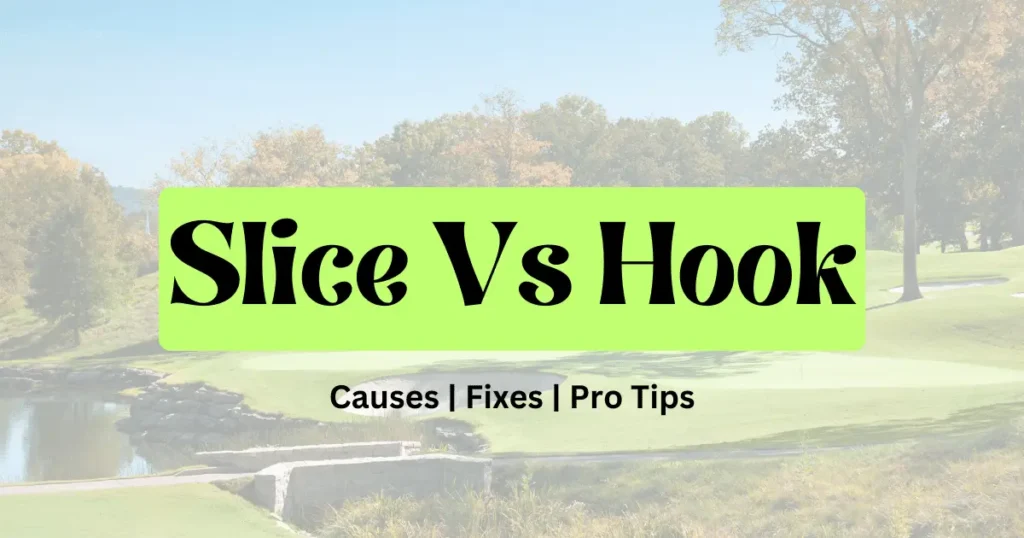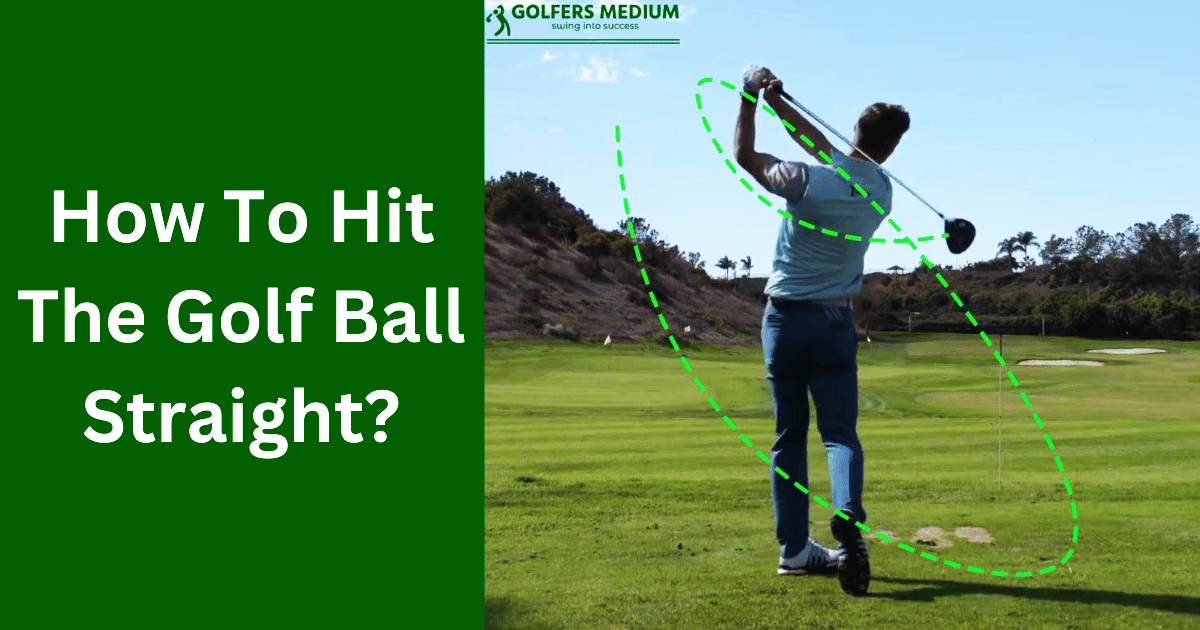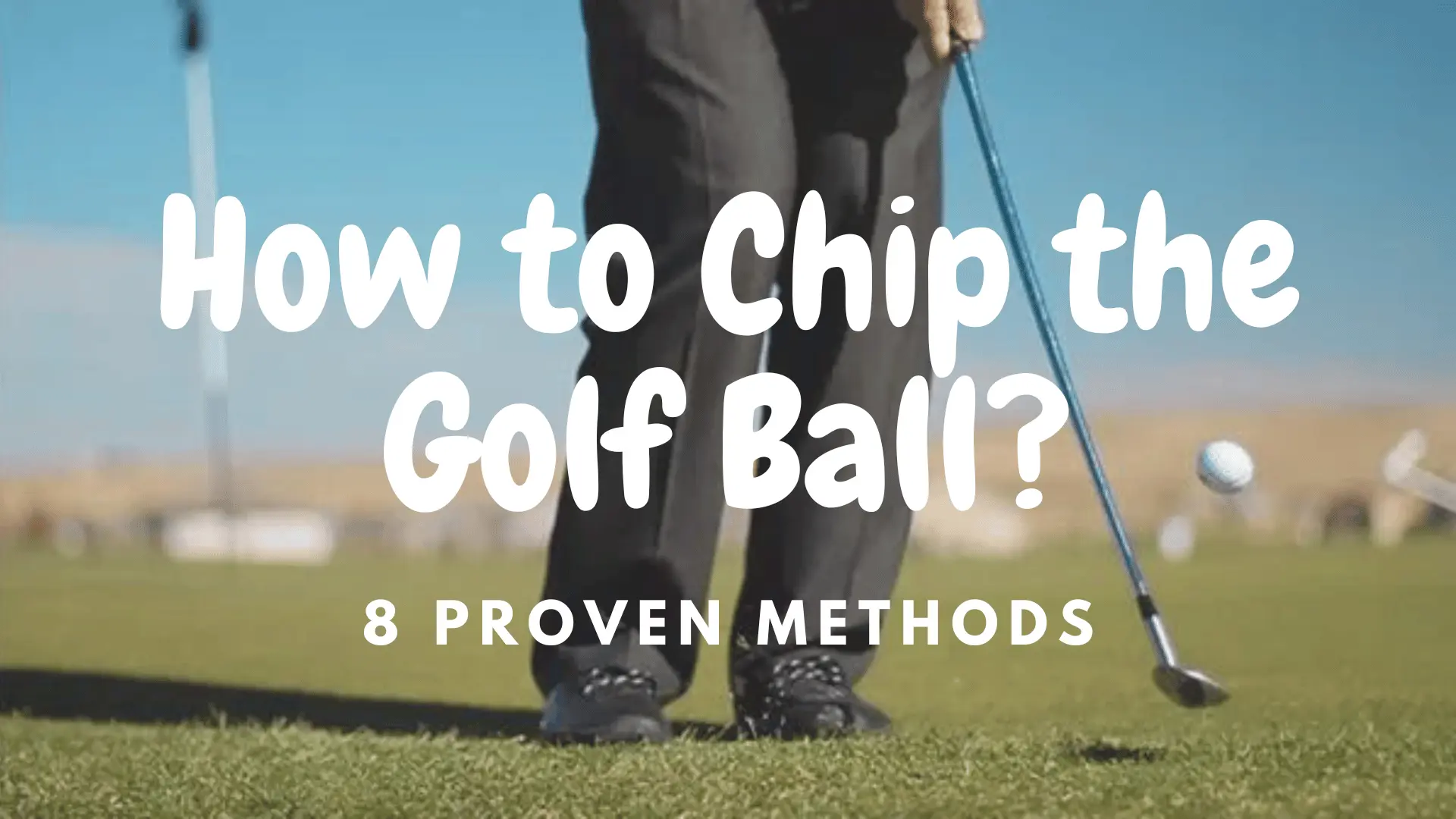First of all, a draw is a shot that curves gently from right to left. Whereas, a fade is a shot that curves gently from left to right. Yes, that’s the difference. Now, the question is which one is better? And which one should be used in which situation?
Let’s dive in:
Advantages of the Draw
Increased Distance
The draw shot can add extra yardage to your shots, making it an excellent choice for overcoming obstacles or reaching distant targets.
Shot Shaping
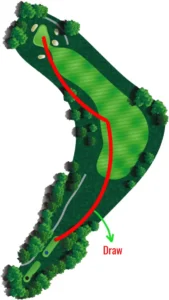
The draw can be manipulated to start on different lines and curve to varying degrees, allowing players to navigate doglegs and tight fairways with greater control. I have explained shot shaping in more detail, check it out if you want to learn more.
Soft Landing
Due to its higher trajectory, a well-executed draw shot can result in a softer landing, making it easier to hold the green on approach shots.
Advantages of the Fade
Control and Accuracy
The fade shot allows golfers to control the ball’s flight path more precisely, making it an ideal choice for navigating narrow fairways or avoiding hazards.
Wind Management
When facing a crosswind, a well-executed fade can counteract the wind’s effect, keeping the ball on a desired line and reducing the chances of drifting off course.
Course Management
Fading the ball can be advantageous on courses with strategically placed pin positions or tight landing areas, as it helps to minimize the risk of overshooting the target.
Is It Better to Draw or Fade?
Both shots, the draw and the fade, require skill and practice to execute consistently. It’s important to note that no shot shape is inherently better than the other.
Deciding between drawing or fading depends on various factors that pertain to you. Your skill level, personal preference, and the specific situation on the course all play a crucial role in making this decision. Keep in mind that there is no definitive answer as both shot shapes have their own advantages.
Developing proficiency in both shot shapes will grant you versatility and adaptability, allowing you to adjust to different course conditions and objectives.
Remember, instead of fixating on which is better, focus on cultivating a well-rounded game that incorporates both the draw and fade when the situation calls for it.
How to Hit a Draw? (3 Easy Steps)
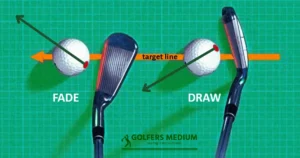
1. Golf Club Positioning
- Address the ball with your clubface slightly closed or aiming to the right of your target line (for a right-handed golfer). This means the clubface should be pointing slightly right of the intended target.
- Align the clubface with your feet, hips, and shoulders. This means the leading edge of the clubface should be parallel to your alignment, slightly to the right of your target (again, for a right-handed golfer).
- Position the ball slightly farther back in your stance than you would for a normal shot. Placing the ball back in your stance encourages a more descending strike, which helps create the desired draw spin.
2. Golf Ball Positioning
- Position the ball slightly right of the center of your stance (for a right-handed golfer). The exact position may vary depending on your swing and club selection, but generally, placing the ball just inside your left heel is a good starting point.
- Placing the ball slightly right in your stance encourages an inside-to-out swing path, helping you make contact with the ball from the inside and promoting a draw.
3. Grip
- To achieve a draw, it is generally recommended to use a grip that is slightly stronger than a neutral grip. Therefore, I would suggest using a “strong grip” for your shots if your goal is to hit a draw.
- A strong grip helps promote a draw by closing the clubface at impact, which, when combined with an inside-to-out swing path, imparts the desired draw spin on the ball. It can provide more control over the clubface and assist in consistently producing a draw shot.
How to Hit a Fade? (3 Easy Steps)

1. Golf Club Positioning
- Address the ball with your clubface slightly open or aiming to the left of your target line (for a right-handed golfer). This means the clubface should be pointing slightly left of the intended target.
- Align the clubface with your feet, hips, and shoulders. This means the leading edge of the clubface should be parallel to your alignment, slightly left of your target (again, for a right-handed golfer).
- Position the ball slightly forward in your stance compared to a standard shot. Placing the ball forward encourages a shallower, sweeping strike, which can help produce the desired fade spin.
2. Golf Ball Positioning
- For a fade shot, position the golf ball slightly left of the center of your stance (for a right-handed golfer). The exact position may vary depending on your swing and club selection, but generally, placing the ball just inside your left heel is a good starting point.
- Placing the ball slightly left in your stance encourages an outside-to-in swing path, which helps create the desired fade spin.
3. Grip
- To achieve a fade shot, it is generally recommended to use a grip that is slightly weaker than a neutral grip. Therefore, I would suggest using a “weak grip” for your shots if your goal is to hit a fade.
- A weak grip helps promote a fade by opening the clubface at impact, which, when combined with an outside-to-in swing path, imparts the desired fade spin on the ball. It can provide more control over the clubface and assist in consistently producing a fade shot.
Which one should I learn first? Draw or Fade?
It’s better to learn the draw first before a fade. A draw requires proper swing mechanics. Take those same mechanics, adjust your swing plane with your body, and boom: Power Fade.
Related Helpful Article
Also See
Hi! I am Hannah, a golf enthusiast, have been perfecting my swing for over a decade, making long putts a breeze. Aside from playing, I am a professional golf writer, I try capture the nuances of the game and inspire others to embrace their love for golf. Follow me on Twitter.


